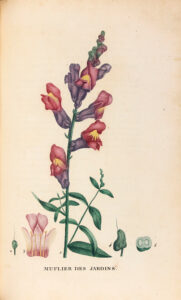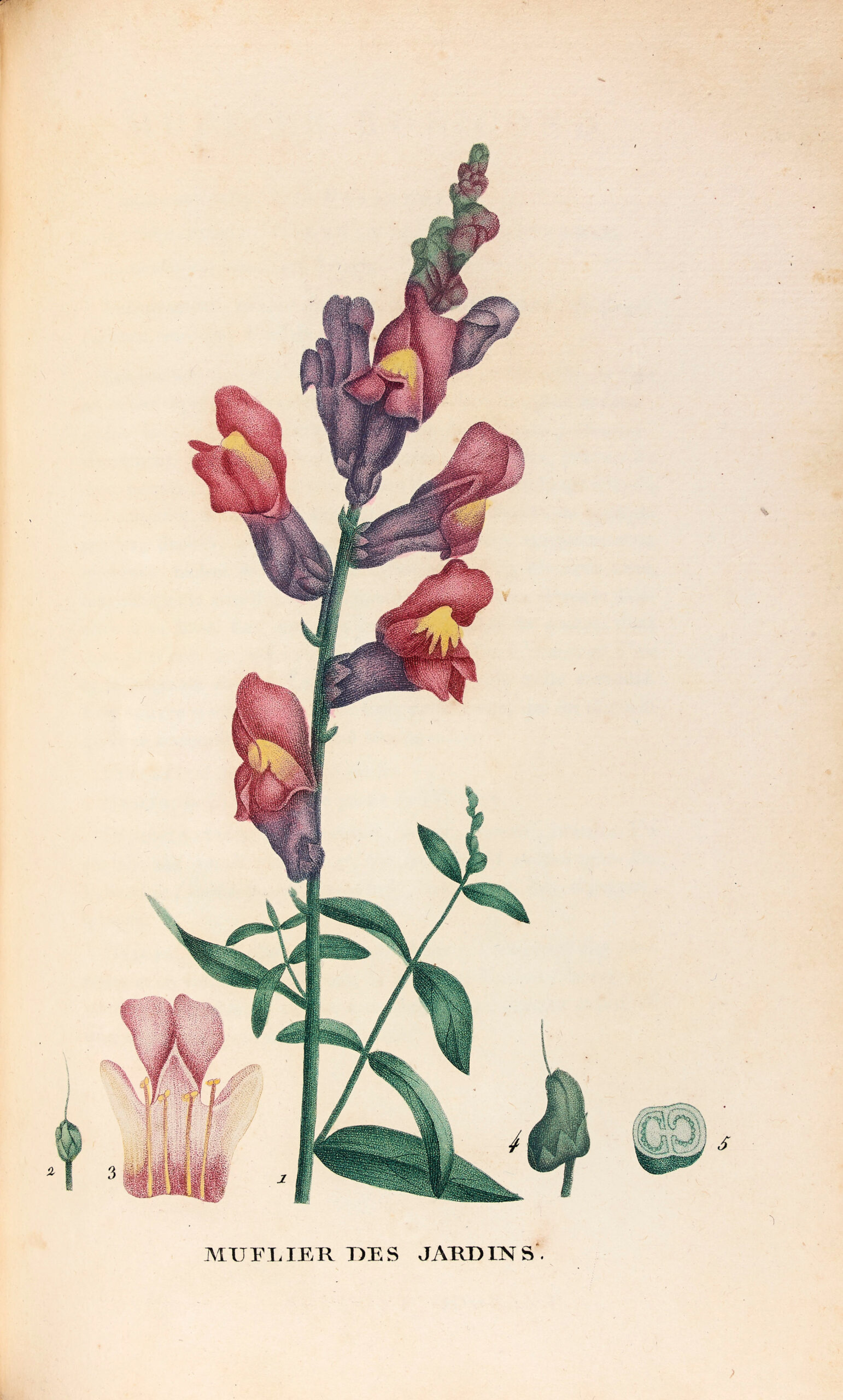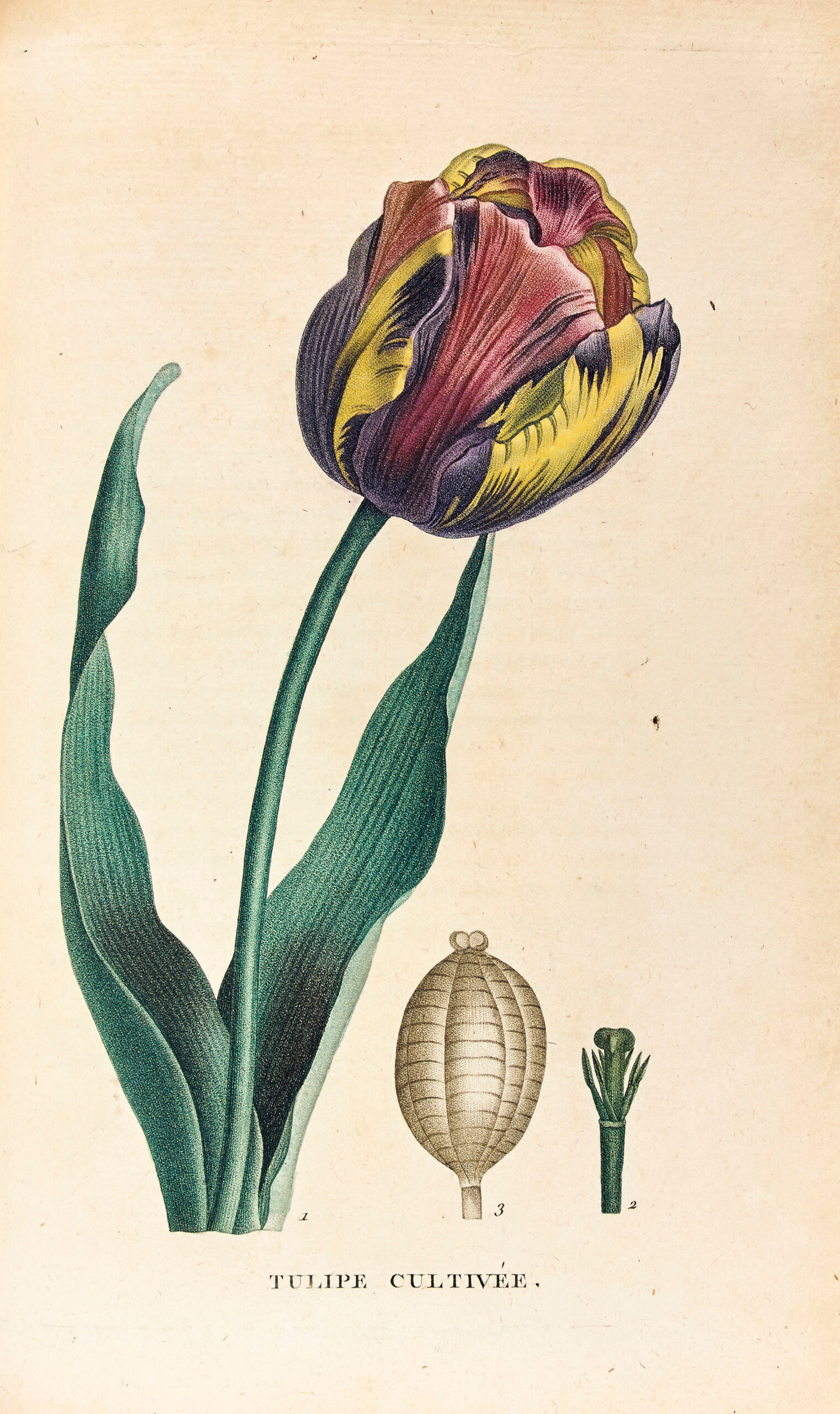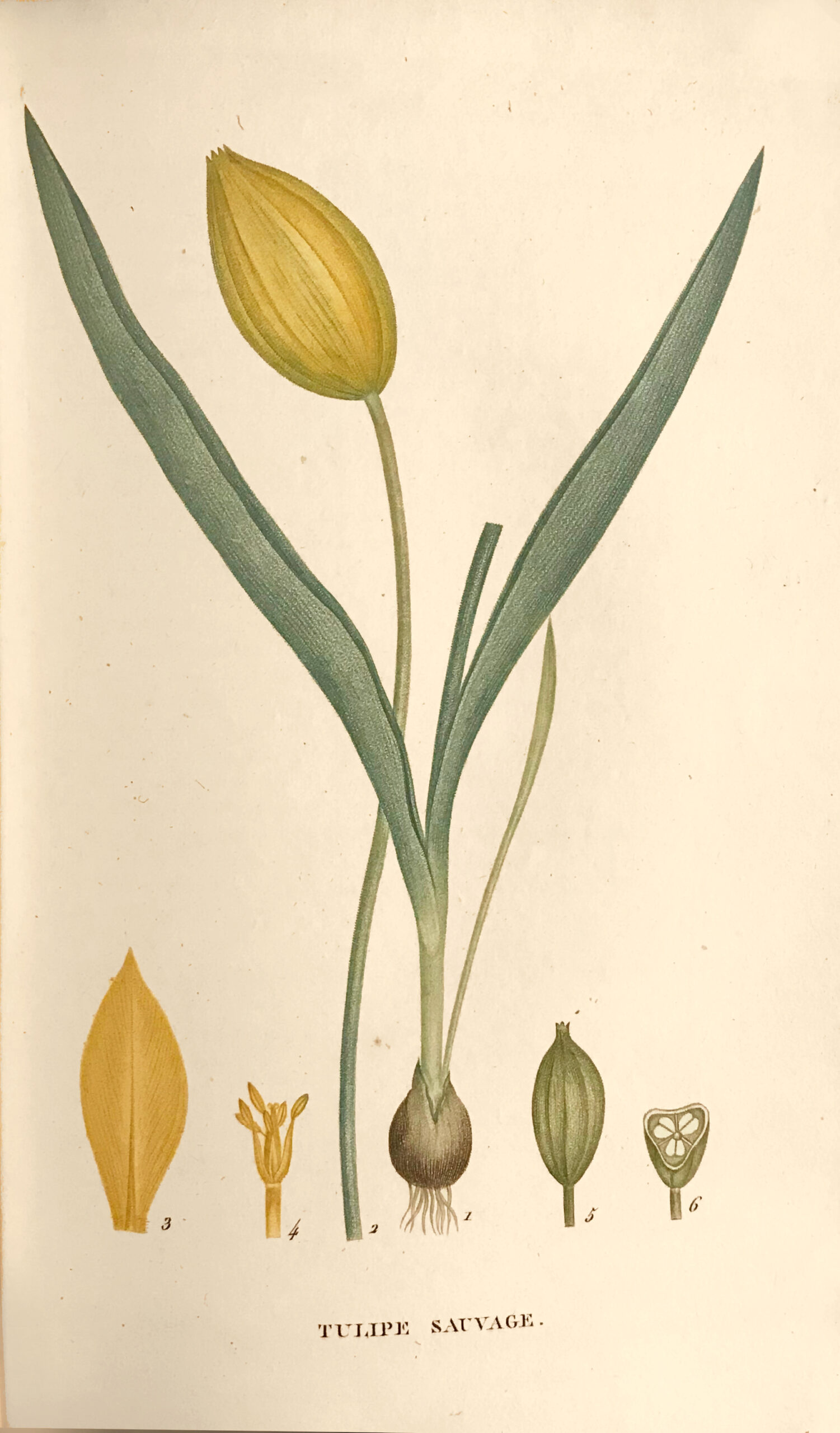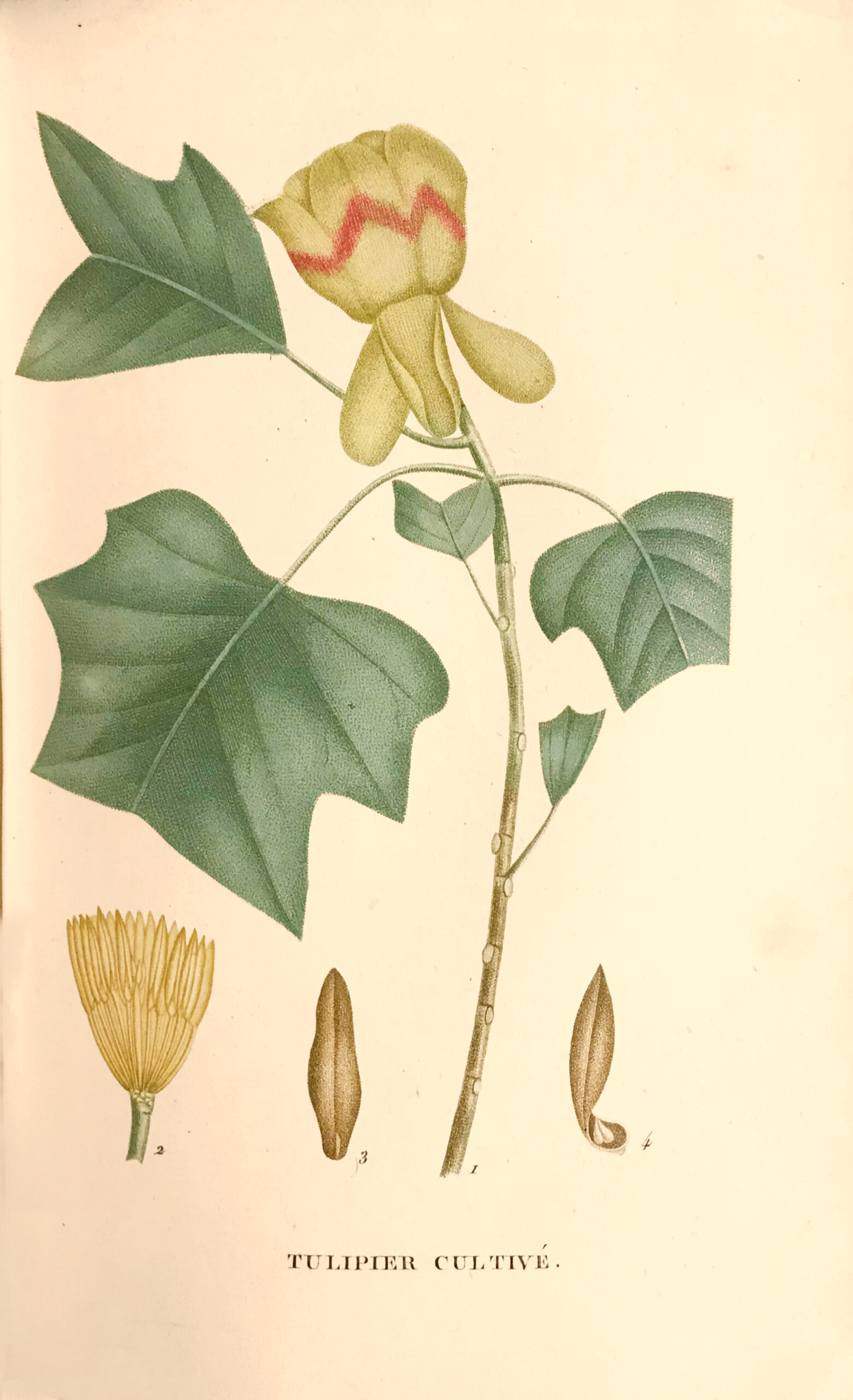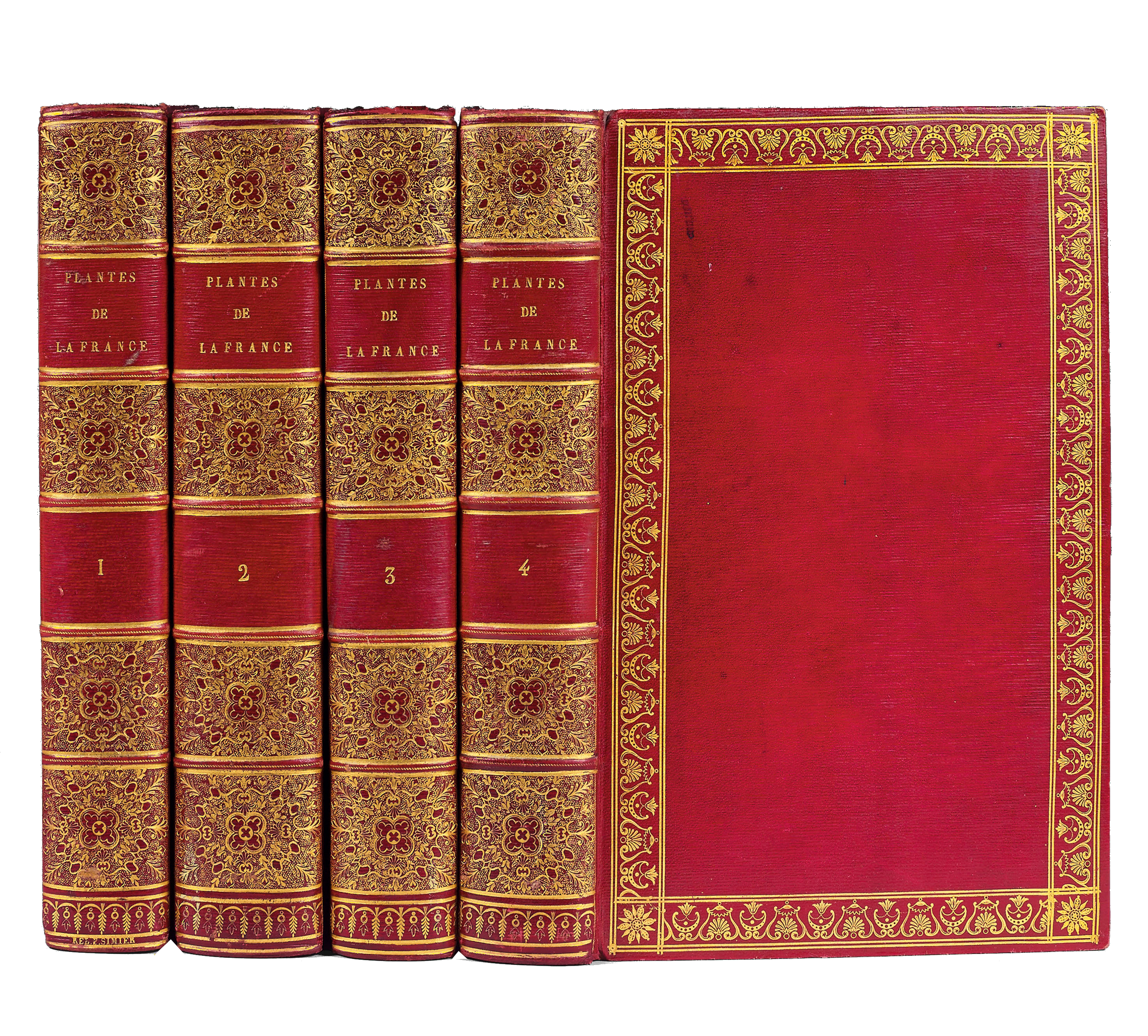Paris, chez l’auteur, 1808-1809.
4 parts bound in 4 volumes small 4to of: I/(1) l., vi pp., xxviii, (82) ll., 94 plates; II/(1) l., (114) ll., 114 plates ; III/(1) l., 93 ll. of text and 92 plates; IV/(1) l., (99) ll., 99 pl, (6) ll.
A total of 399 lithographs (of 400). The plate “Pervenche grande” that should be in volume III is placed in volume II and the plate “Narcisse jonquille” (p. 265) has never been inserted in this same volume III.
Bound in contemporary straight grained red morocco, large gilt border framing the covers, ribbed spines, gilt inner border, blue endpaper and watered silk, gilt edges. Contemporary binding signed by Simier.
257 x 164 mm
First edition, first issue of this famous work illustrated with 400 plates engraved and printed in colour after the author’s drawings, depicting the flowers and the plants of France.
Graesse, Trésor de livres rares, 454 ; Brunet, III, 517 ; Stafleu 579 ; Dunthorne 211 ; Nissen 989.
“The aim of this work is to make known by a figure printed in colour and of natural size all the plants which grow naturally on the soil of France and which are naturalized there; to give an exact description of the general character of the plant and of what it offers the observer in particular; to describe its uses in the arts, in medicine, in the rural and domestic economy, in vegetable gardens or in flowerbeds; and finally to offer a collection of the most generally followed procedures for its successful cultivation; the author has fulfilled this goal. It is not only for botanists that he has written, enough other works could offer them more or less satisfactory descriptions and figures; but the enlightened amateur, the one who makes of botany an occupation suitable to charm his leisure, does not want to buy a grêt number of very expensive works and out of his use by the manner in which they are trêted; this amateur, either simple private individual, or even a cultivator in some kind, will find in the work of M. Jaume de Saint-Hilaire will find in his work all the notions he may desire and which may interest him, either as an object of utility or as pure plêsure: the figures painted by the author on living individuals and executed before his eyes, lêve little to be desired. In addition, the success that the work has obtained, both in France and abroad, is proof that it is not below our judgment. If we said that this work was particularly useful to amateurs, we did not mên to say that the botanist could not derive much use from it. We believe, on the contrary, that there is no collection in which so many plants of France and especially figures which are such a satisfactory execution can be found. (Esprit des Journaux Français et étrangers par une société de gens de Lettres, 1811).
The present copy belongs to the large-paper issue which publication costed twice the price of the 8vo issue.
This work was published in 54 parts. According to Stafleu, there were 2 printings of this work, one on vellum paper, the second one on laid paper, with a total of only 400 copies printed.
It is illustrated in the first state with 399 « small but exquisitely delicate plates of pure colour printing » (Dunthorne).
The 399 plates out of pagination printed in color have been etched by Dubreuil and Veron. Each plate comes with by a text giving a botanic description, indications of flowering, their foreign denominations, their cultures and eventually their medicinal virtues.
They are, according to Arpad Plesch “charming and exquisite pure color printing plates”.
Precious copy printed on large paper, particularly wide-margined, luxuriously bound in contemporary red morocco by Simier.
See less information
